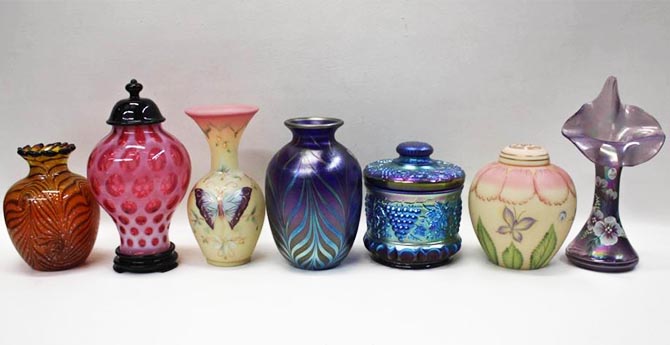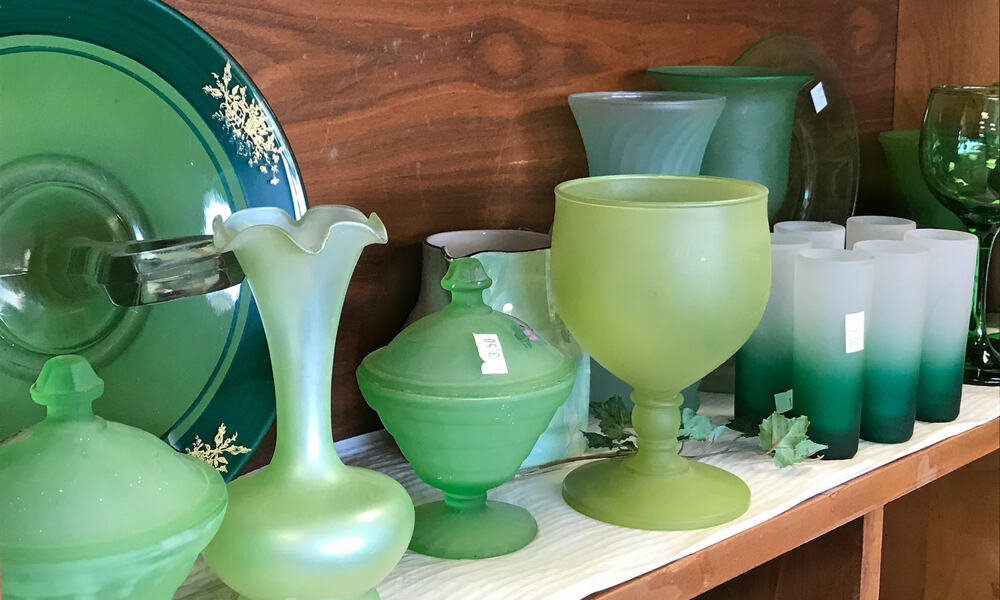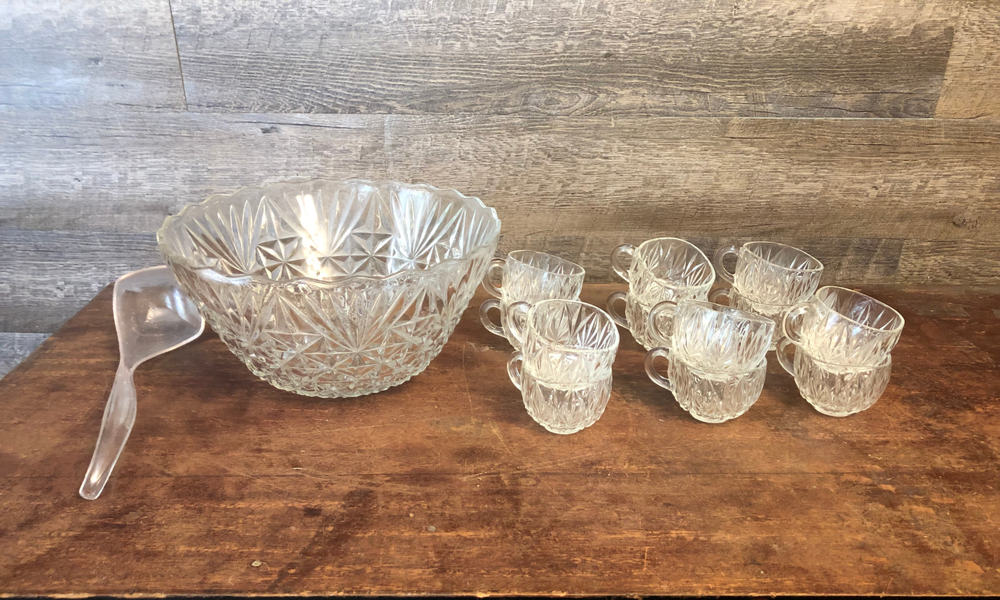Introduction
What Is The Most Valuable Antique Glassware: Antique glassware has long held a fascination for collectors and enthusiasts alike, drawing individuals into a world where craftsmanship, history, and aesthetics converge to create objects of timeless beauty and immense value. Among the myriad categories of antiques, antique glassware stands out as a particularly captivating and valuable field. While determining the single “most valuable” piece can be subjective and context-dependent, there are several iconic types and examples of antique glassware that consistently command extraordinary prices in the collectors’ market.
One such category is antique stained glass windows, renowned for their exquisite artistry and historical significance. These masterpieces of glasswork often originate from centuries-old churches, cathedrals, and grand estates, with intricate designs that tell stories of religious devotion and artistic innovation. Their value transcends mere monetary worth, as they represent a rich tapestry of cultural heritage.
Another highly prized subset of antique glassware is the art glass produced by celebrated makers like Louis Comfort Tiffany and Émile Gallé. These artisans pushed the boundaries of glassmaking, creating breathtaking vases, lamps, and decorative objects characterized by vibrant colors, intricate patterns, and innovative techniques. Their creations are sought after not only for their artistic brilliance but also for their rarity.
In the realm of tableware, antique glassware includes exquisite examples of crystal stemware and glass sets crafted by esteemed manufacturers such as Baccarat and Lalique. These pieces are renowned for their clarity, brilliance, and timeless elegance, making them highly coveted by collectors who appreciate both their aesthetic appeal and functional utility.
This introduction provides a glimpse into the enchanting world of antique glassware, where history and craftsmanship converge to create objects of enduring beauty and significant value. In the subsequent sections, we will delve deeper into specific categories and examples, shedding light on what makes them so valuable and sought after in the realm of antiques.

Is antique glassware valuable?
Some piece of antique glass are worth only a few dollars, and others can be worth hundreds. The value of antique glassware depends on several factors: Rarity – If there were lots of pieces made in a pattern or color, it’s usually less valuable. However, if it’s rare, it may be worth money to collectors.
Yes, antique glassware can be exceptionally valuable. The value of antique glassware is determined by a combination of factors, including its rarity, age, craftsmanship, historical significance, and overall condition. Certain types of antique glassware, such as stained glass windows from centuries-old churches or masterpieces by renowned artisans like Louis Comfort
Tiffany and Émile Gallé, can command astronomical prices in the collectors’ market. Additionally, antique glassware that belongs to well-known manufacturers like Baccarat or Lalique often holds significant value due to their reputation for quality and design excellence. Furthermore, the sentimental and historical value associated with antique glassware can make it even more precious to collectors and enthusiasts.
s with any collectible, the value of antique glassware can fluctuate over time, influenced by trends in the antiques market and the tastes of collectors. Nonetheless, its enduring allure and beauty continue to captivate individuals who appreciate the artistry and craftsmanship encapsulated in these exquisite pieces of glass.
What antique glass is worth the most?
The most valuable glass you could find, however, is art glass—pieces not intended to be used practically as vases and such but rather meant to be art alone.
The value of antique glassware can vary widely depending on several factors, but some categories tend to consistently fetch the highest prices in the collectors’ market. One of the most valuable types of antique glass is stained glass windows from historic churches, cathedrals, and grand estates. These windows often feature intricate designs, vibrant colors, and centuries of history, making them prized not only for their aesthetic beauty but also for their cultural and architectural significance.
Another highly valuable category includes art glass created by renowned artisans like Louis Comfort Tiffany and Émile Gallé. These craftsmen pushed the boundaries of glassmaking, producing exquisite vases, lamps, and decorative objects known for their vibrant colors, intricate patterns, and innovative techniques. Their pieces are cherished for their artistic brilliance and are among the most sought-after collectibles in the world of antique glassware.
In the realm of tableware, crystal stemware and glass sets from prestigious manufacturers such as Baccarat and Lalique are highly prized. These pieces are celebrated for their clarity, brilliance, and timeless elegance, often gracing the tables of royalty and nobility throughout history.
While these categories are recognized for their consistently high values, the specific worth of any antique glassware item depends on its rarity, condition, provenance, and current demand among collectors. Therefore, determining the single “most valuable” antique glassware item can be subjective and context-dependent, but it’s undeniable that these categories represent some of the most coveted and valuable treasures in the world of antiques.
What are the names of antique glasses?
Some of the most collectible types & styles of antique and vintage glassware include Depression Glass, Carnival Glass, Milk Glass, Moonstone, Hobnail Glass, and Jadeite. One of the most popular styles of antique glass was a Hen on Nest, also known as Animal Dishes because of the variety of animals they come in.
Antique glassware encompasses a vast array of styles and types, each with its own unique name and characteristics. Some of the notable names and categories of antique glasses include:
Stained Glass Windows: These are intricate, often colorful glass panels used in churches, cathedrals, and historic buildings to depict religious scenes or intricate designs.
Art Glass: Art glass includes the works of renowned glass artisans like Louis Comfort Tiffany, Émile Gallé, and René Lalique, who created exquisite vases, lamps, and decorative objects characterized by their artistic flair and innovation.
Crystal Stemware: Fine crystal glasses for wine, champagne, and other beverages, often crafted by esteemed manufacturers like Baccarat and Waterford, known for their clarity and brilliance.
Cut Glass: This type of glass features intricate patterns and designs cut into the glass surface, creating a sparkling, reflective effect. American Brilliant Cut Glass is a notable category within this style.
What is considered antique glassware?
Wealthy collectors were attracted to crystal for its light-reflecting qualities, and it became a popular serving option during the 19th century. Crystal produced during this era is considered antique by collectors, while those created after World War I are generally regarded as vintage glassware.
Antique glassware typically refers to glass objects, vessels, and decorative pieces that are at least 100 years old or older. These items have transcended the realm of mere functional objects to become collectible artifacts valued for their historical significance, craftsmanship, and aesthetic appeal.
Antique glassware spans a wide range of styles, techniques, and purposes, including stained glass windows, art glass creations by renowned artisans, crystal stemware and tableware, cut glass, pressed glass, and various other decorative glass pieces. These pieces often showcase the artistic and technological achievements of their respective eras, offering a glimpse into the cultural and design trends of the past.
The value of antique glassware can vary widely based on factors such as rarity, provenance, condition, and demand among collectors. Whether treasured for their beauty, historical connections, or as investments, antique glassware continues to captivate collectors and enthusiasts, serving as both a testament to human creativity and a window into the craftsmanship of bygone times.

What factors contribute to the value of antique stained glass windows?
The value of antique stained glass windows is influenced by several key factors, each contributing to its overall worth in the collectors’ market:
Age and Historical Significance: The older a stained glass window is, the more likely it is to hold significant historical value. Windows that have been part of prominent churches, cathedrals, or historically important buildings can command higher prices due to their connection to significant events or periods.
Artistry and Craftsmanship: The intricacy and quality of the design and craftsmanship are crucial factors. Windows created by renowned artisans or studios known for their skill and innovation are highly valued. The complexity of the design, the use of vibrant colors, and the level of detail all play a role in determining value.
Subject Matter: The subject matter depicted in the stained glass window can also impact its value. Religious scenes, biblical narratives, or intricate geometric patterns often hold greater appeal for collectors, while more generic or secular designs may be less sought after.
Condition: The condition of the glass and leading (the metal framework that holds the glass pieces together) significantly affects value. Windows with minimal damage, well-preserved colors, and minimal signs of wear and restoration tend to command higher prices.
Provenance: The history and ownership lineage of a stained glass window can add to its value. If it can be traced back to a famous artist, designer, or notable historical figure or location, this provenance can make the window more desirable to collectors.
Who are some renowned artisans known for creating valuable antique glassware?
Several renowned artisans have left an indelible mark on the world of antique glassware, creating highly valuable and collectible pieces cherished for their artistic brilliance and craftsmanship. Here are a few notable names:
Louis Comfort Tiffany: Louis Comfort Tiffany, an American artist and designer, is celebrated for his contributions to art glass. His iconic Tiffany lamps, stained glass windows, and decorative objects are revered for their use of opalescent glass and innovative techniques, such as the “Favrile” glass, which exhibits a stunning range of colors.
Émile Gallé: Émile Gallé was a French glass artist and pioneer of the Art Nouveau movement. His intricate and detailed glassworks, often featuring nature-inspired motifs and cameo glass techniques, are highly sought after by collectors worldwide.
René Lalique: René Lalique, a French glass designer, is renowned for his exquisite glass creations during the Art Nouveau and Art Deco periods. His opalescent glass vases, perfume bottles, and jewelry designs are prized for their elegant and often nature-inspired designs.
Johann Loetz: Loetz is known for its stunning iridescent glassware produced in Bohemia (now the Czech Republic) during the late 19th and early 20th centuries. The company’s shimmering, colorful glass vases and vessels are highly coveted by collectors.
Almeric Walter: A contemporary of Émile Gallé, Almeric Walter was a French glassmaker known for his intricate pâte de verre glasswork. His delicate and finely detailed glass sculptures and vases are prized for their artistry and rarity.
What distinguishes Baccarat and Lalique glassware as highly prized collectibles?
Baccarat and Lalique are two of the most esteemed glassware manufacturers in the world, and their creations are highly prized collectibles for several distinct reasons:
Exceptional Craftsmanship: Both Baccarat and Lalique are synonymous with meticulous craftsmanship. Baccarat, a French crystal manufacturer founded in 1764, is renowned for its flawless crystal-cutting techniques, producing pieces with unparalleled clarity and brilliance. Lalique, established in the late 19th century, is celebrated for its mastery of intricate glass molding and etching processes. The level of craftsmanship exhibited in their glassware sets them apart as exemplars of quality.
Artistic Innovation: Lalique and Baccarat have consistently pushed the boundaries of glass artistry. Lalique, under the visionary René Lalique, introduced opalescent and frosted glass techniques, incorporating nature-inspired motifs and innovative designs. Baccarat, on the other hand, is famous for its crystal-cutting techniques, including the iconic Harcourt pattern, which remains an emblem of timeless elegance.
Historical Significance: Both manufacturers have a storied history, contributing significantly to the glassware industry. Baccarat has supplied crystal to royalty and nobility worldwide, including Louis XVIII, Louis-Philippe, and Charles X of France. Lalique’s work during the Art Nouveau and Art Deco periods left an indelible mark on the world of decorative arts, defining those eras’ aesthetics.
How does the historical significance of antique glassware influence its value in the collectors’ market?
The historical significance of antique glassware is a pivotal factor influencing its value in the collectors’ market. Antique glassware often carries with it a tangible connection to the past, and this historical context adds layers of value:
Cultural and Artistic Heritage: Glassware can serve as a reflection of the cultural and artistic trends of the era in which it was created. Pieces from historically significant periods, such as the Renaissance, Baroque, or Art Nouveau, offer insights into the artistic and design sensibilities of their times, making them valuable not only as decorative objects but also as historical artifacts.
Provenance and Ownership: If an antique glassware item can be traced back to a famous or historically significant figure, location, or event, its value can skyrocket. For instance, glassware from a renowned palace or once-owned by a famous historical figure can command significantly higher prices due to its association with a notable provenance.
Technological Advancements: Some antique glassware reflects innovations in glassmaking techniques and technology. Examples include the advancements in stained glass during the Gothic era or the development of cameo glass during the Art Nouveau period. Such pieces hold historical value for showcasing the evolution of craftsmanship and technology.
Cultural and Religious Significance: Stained glass windows in churches and cathedrals often depict religious narratives and have deep spiritual significance. These windows are not just admired for their artistic merit but also cherished for their role in conveying religious stories and values, adding to their historical and cultural value.

Conclusion
The world of antique glassware is a realm where history, artistry, and craftsmanship intertwine, giving rise to objects of exceptional beauty and substantial value. While identifying the singular “most valuable” piece in this diverse landscape remains a subjective endeavor, the categories and examples we’ve explored illustrate the rich tapestry of treasures that captivate collectors and enthusiasts.
From the awe-inspiring stained glass windows gracing the world’s most venerable religious and historical sites to the masterful creations of glass artisans like Louis Comfort Tiffany and Émile Gallé, antique glassware showcases the heights of human creativity and ingenuity. These pieces transcend their utilitarian origins, transforming into tangible connections to the past and windows into the evolving techniques of glassmaking.
Tableware, too, boasts its own array of priceless gems, with crystal stemware and glass sets from renowned manufacturers like Baccarat and Lalique standing as emblems of refinement and elegance. Their enduring appeal lies not only in their visual allure but also in the stories they tell about the opulence and sophistication of bygone eras.


